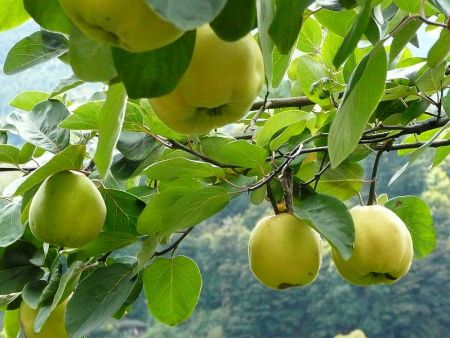Cookies might be the ultimate green and well-received gift — They’re delightful, yummy and fun. They come from the heart. They’re economical. Making and exchanging them can be a fun holiday tradition. And you can always make a few extra for yourself.
This week I had the pleasure of attending a cookie exchange! Lucky me (and my family.) Each year the women who volunteer to help with my local Girl Scout group have an exchange in which attendees bring 4 dozen cookies and an empty container. The cookies all go out on a table, and we line up (Girl Scout volunteers are orderly) and go around the table, socializing and taking a cookie from each plate until they are all distributed. (A photo from the exchange is above.)
There are several cookies that have become part of our holiday baking traditions. I usually manage to make a couple of types each year. They happen to be easy to make. Here are the favorites.
Spritz Cookies

I grew up making these. In fact, my mom really enjoyed making Spritz cookies and Halloween cupcakes. A certain whiff from an electric beater (she had a great, big Hamilton Beach one that was permanently on the counter) takes me right back to childhood winters and falls.
Spritz cookies are made by pressing the soft dough through a cookie press and through various plates with interchangeable shapes. I love the efficiency and fun of pressing out lots of little cookies. Once pressed onto a cookie sheet, you can decorate them with the sprinkles of your choice. I think one of the keys to good Spritz cookies is: Be sure your recipe includes almond flavoring (or add 1/2 tsp. per 4-5 cups of dry ingredients, or half as much as your vanilla flavoring). The other is: Have fun decorating. This can be a very festive and delicious cookie. If you do color the cookies (which I recommend!) you might want to try professional paste frosting colors, which, with a little patience, produce a nice deep color. (You can get a box of 8 small color jars from ChefMaster, available at specialty baking stores, for around $7).
It also takes a little practice to learn to press the right amount of dough out per cookie. (Most presses have adjustable settings.) The good news is you can just scoop dough that didn’t work out back into the press and try again.
This site, from Wilton, offers the classic Spritz recipe, plus links for buying a cookie press. I recommend the reasonably priced Cookie Max.
Butterballs
You may know them as Mexican Wedding Balls, or Russian Tea Cookies. Butterballs are mine (and a lot of people’s) favorite cookie — They’re tasty, melt-in-your-mouth buttery, sugar-coated, and just all-around great, any time of year. I find the ones in The Silver Palate Cookbook to be the best of the best, perhaps because they’re largely sweetened with honey, which provides a great taste and crunch.
Here is a copy of the recipe, from The Silver Palate Cookbook.
Sugarplums
One more from the Silver Palate team — This one is in The Silver Palate Good Times Cookbook: Sugarplums. Mythical, festive, evocative Sugarplums. (Blame it on The Nutcracker and The Night Before Christmas.) They are certainly as much fun to pop into one’s mouth as they are to contemplate. The original recipe calls for corn syrup and cognac. I substituted agave syrup, a mild and more natural sweetener for half the corn syrup, and all of the cognac (using a little under 1/3 c. for the cognac portion.) And I did away with the cherry on top, the better to enjoy the pure, undiluted Sugarplum experience.
Enjoy!
My criteria for a green holiday gift? Items meet all or most of the following: Promotes nature play or care of the earth, Uses all or mostly natural ingredients, Fosters hours of open-ended creative play, Doesn’t use extraneous plastic or other wrapping, Doesn’t break the bank to buy it.
Photos by Susan Sachs Lipman





















































